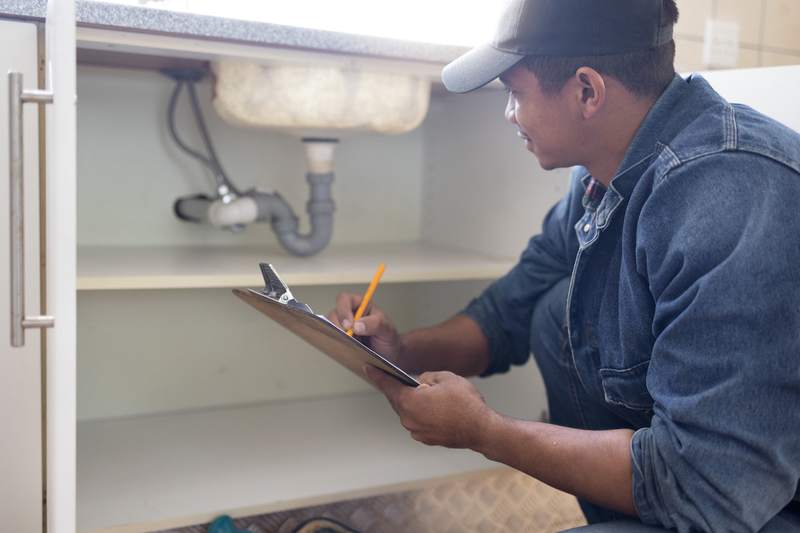
When you apply for a mortgage, lenders will assess your finances to determine how much risk you pose as a borrower. Your loan-to-value ratio is one of the factors that will affect the mortgage you can afford, as well as the interest rate that lenders will offer.
However, LTV ratio requirements vary depending on the type of loan. We’ll break down how your LTV ratio works and the different LTV ratio requirements by loan type.
What Is LTV Ratio?
LTV ratio is a figure expressed as a percentage that compares your loan amount to the appraised value of the home you’re looking to buy. It’s a simple way to represent how much of the home’s value is covered by your down payment and how much you need to borrow.
How is LTV ratio used by lenders?
Lenders use your LTV ratio when you apply for a home loan to gauge whether you’ll be able to pay back the loan.
A low LTV ratio shows that you’ve made a sizable down payment and are likely to keep up with your monthly payments. As a result, a low LTV ratio can help you score a lower interest rate.
On the other hand, a high LTV ratio suggests you’re a risky borrower and can make your mortgage more expensive. If your LTV ratio is higher than the limit requirement for your loan type, you may not get approved for a mortgage.
How Your LTV Ratio Affects Your Mortgage
| Low LTV Ratio | High LTV Ratio |
| High down payment. | Low down payment. |
| Better chance of getting approved for a home loan. | Lower chance of getting approved for a home loan. |
| You may qualify with a lower credit score. | You need a higher credit score to qualify. |
| Lower interest rates. | Higher interest rates. |
| You don’t need a higher income and assets to qualify. | You need a higher income and more assets to qualify. |
| You may be able to roll closing costs into your mortgage. | You need to pay more of your closing costs out of pocket. |
| You may not need to pay for private mortgage insurance. | You likely need to pay for private mortgage insurance. |
LTV Ratio Requirements by Loan Type
Different types of loans have different LTV ratio requirements. Here’s a look at what you need to know about LTV ratio requirements by loan type.
Conventional loans
Conventional loans are the most common type of loan. Two types of conventional loans are conforming and nonconforming.
Conforming conventional loans are backed by Fannie Mae and Freddie Mac, two government-sponsored enterprises that guarantee most of the loans in the United States. If you’re looking to buy a home with a conventional loan, Freddie Mac requires that your LTV ratio not exceed 95%, while Fannie Mae allows for LTV ratios up to 97%.
FHA loans
FHA loans are backed by the Federal Housing Administration and are geared toward borrowers with lower credit scores and a smaller down payment.
If your credit score is between 500 and 579, then your LTV ratio cannot exceed 90% to be eligible for an FHA loan. If your credit score is above 580, then the maximum LTV ratio is 96.5%.
USDA and VA loans
USDA loans are offered by the Department of Agriculture to low- and moderate-income borrowers in rural areas. VA loans are backed by the Department of Veterans Affairs and are offered to eligible veterans, current service members, and their surviving spouses.
USDA loans and VA loans are unique in that both loan types allow you to finance up to 100% of the home’s value. However, the maximum loan amount to qualify for a VA loan with a 100% LTV ratio is $417,000. In addition, the purchase can exceed the home’s appraised value. For USDA loans, you’ll need to add the upfront guarantee fee to your loan in order to purchase the home at a 100% LTV ratio.
Are LTV Ratio Requirements Higher for First-Time Homebuyers?
First-time homebuyers have an advantage when it comes to LTV ratio requirements.
Fannie Mae’s Standard 97 Percent Loan-to-Value mortgage is offered to first-time homebuyers who can’t save for a big down payment. As the name suggests, you can be eligible for this type of mortgage if you’re a first-time homebuyer and your LTV ratio doesn’t exceed 97%. If you’re purchasing a second home, then Fannie Mae sets the LTV ratio limit at 90%.
Freddie Mac sets the LTV ratio maximum at 95% for first-time homebuyers, while the maximum LTV ratio for a second home is 90%.
Other Factors That Lenders Consider
Besides LTV ratios, there are several other important things that will affect your mortgage eligibility and interest rate. Here are some of the other factors that lenders consider:
- Down payment. Making a larger down payment can help you get a lower interest rate because lenders are taking on less risk and you own more of the home’s value. To get a conventional loan, you’ll need a down payment of at least 3%.
- Loan amount. If your loan amount is particularly small or large, then you can expect to pay a higher interest rate.
- Loan term. Loans with shorter terms tend to come with lower interest rates and lower overall costs compared to loans with longer terms.
- Interest rate. Adjustable-rate mortgages may start off with a lower interest rate for an introductory period. After that, your interest rate will adjust once or twice a year, which could increase your costs.
- Loan type. Your interest rate can vary depending on whether it’s a conventional, FHA, VA, or USDA loan.
- Closing costs. On top of your down payment, you’ll also be charged closing costs, which can run about 2% to 5% of the purchase price.
FAQ
Here are the answers to some frequently asked questions about LTV ratio requirements.











